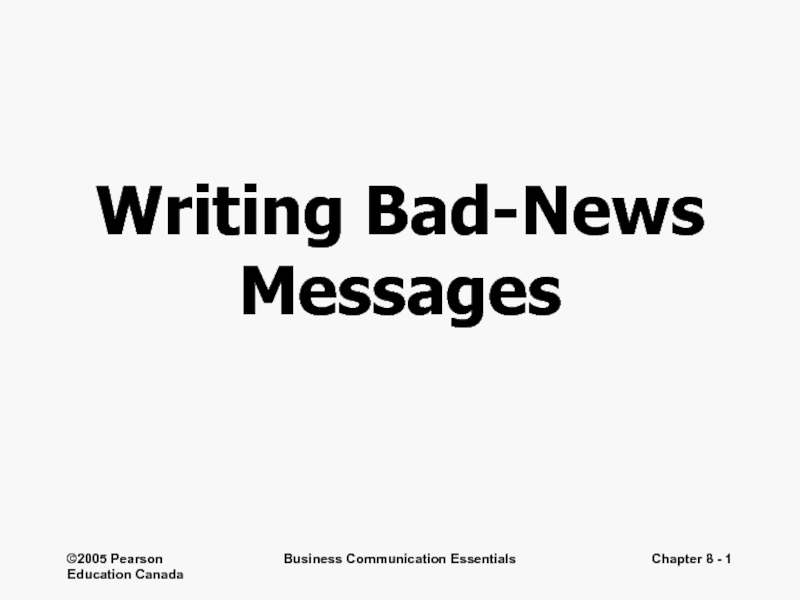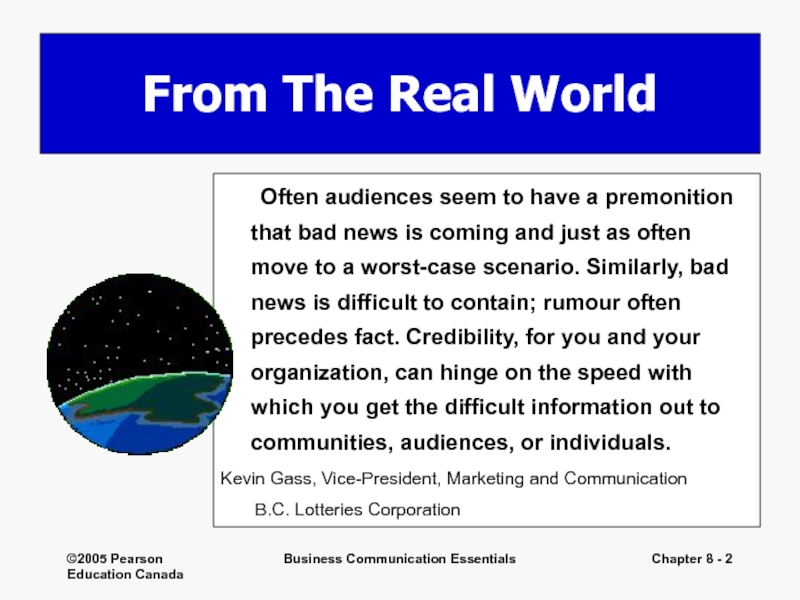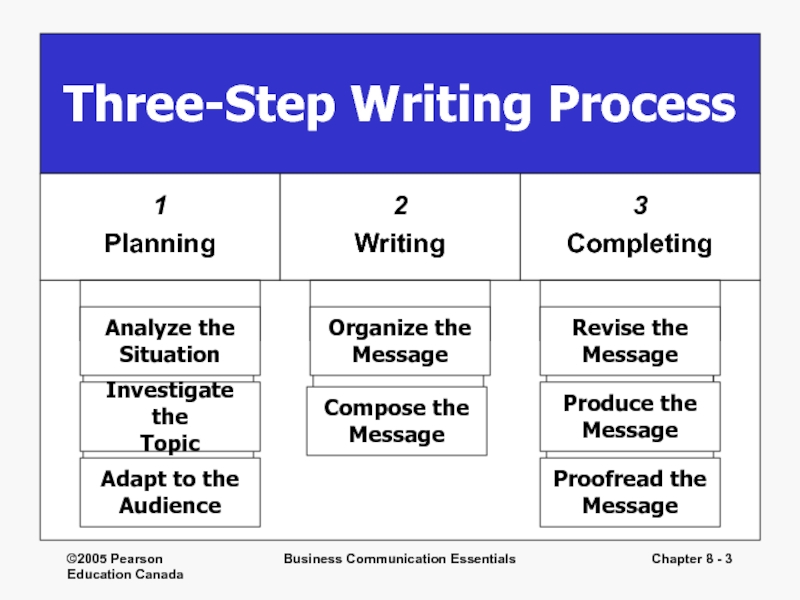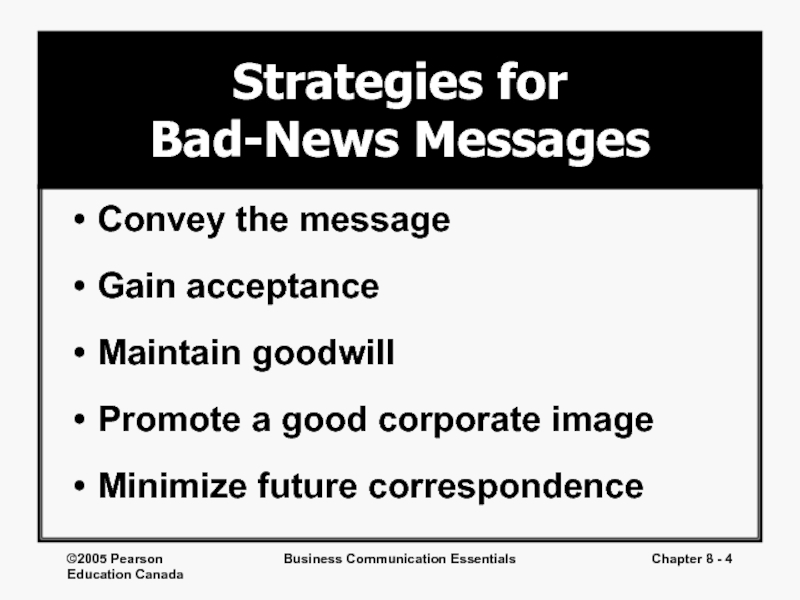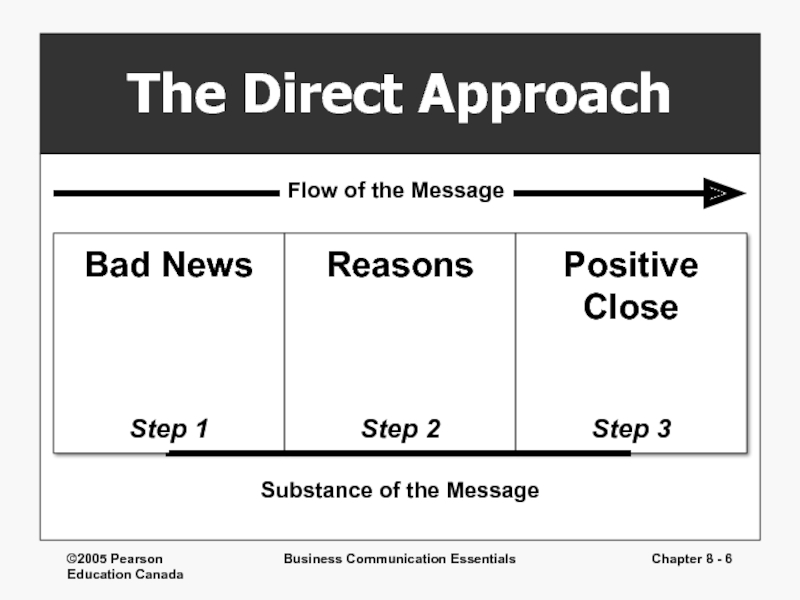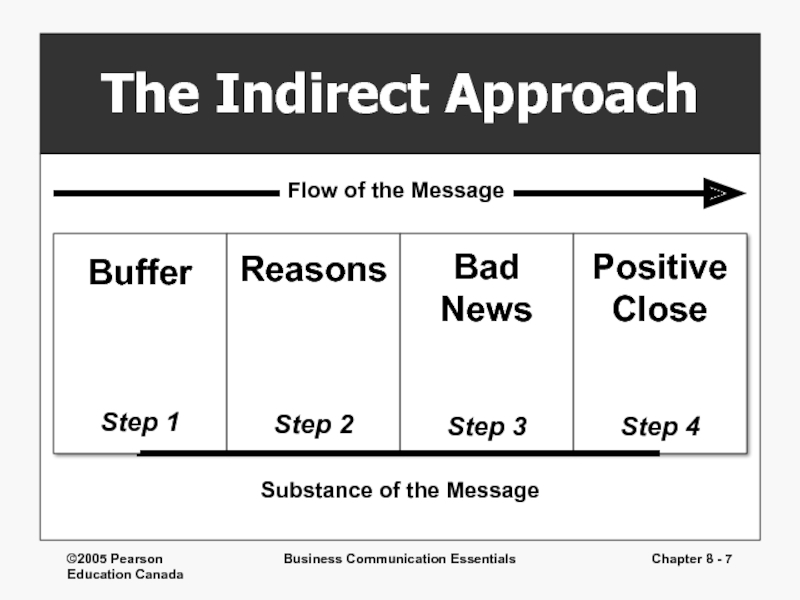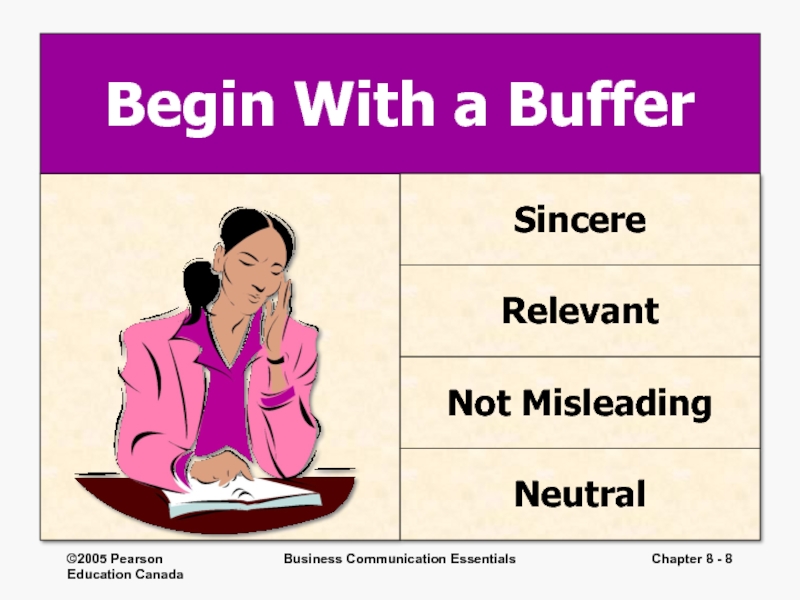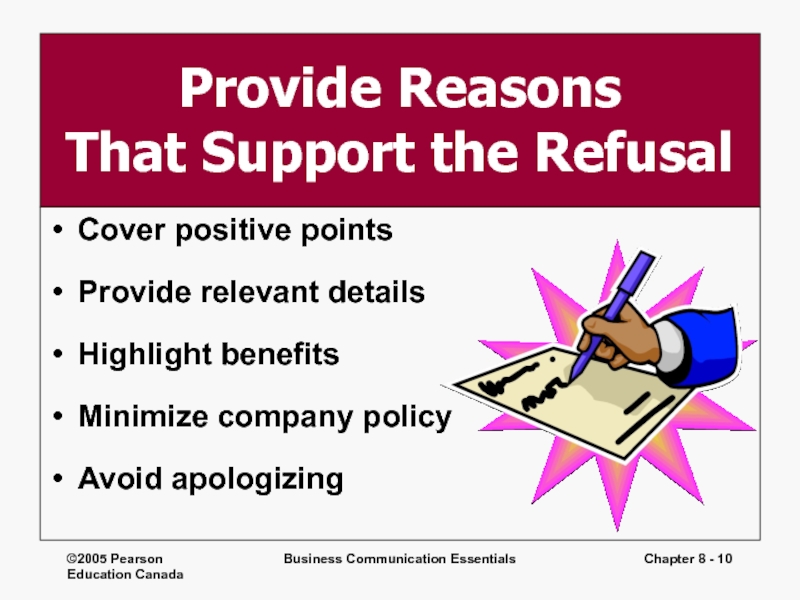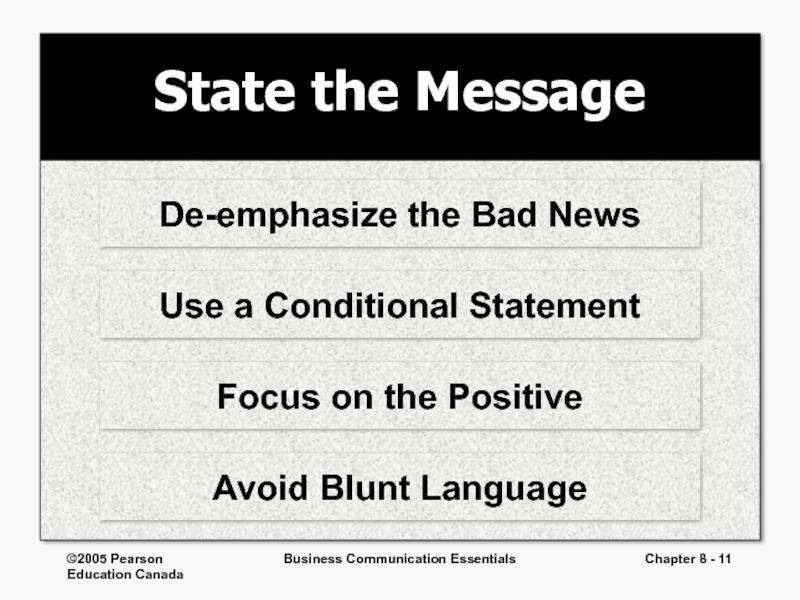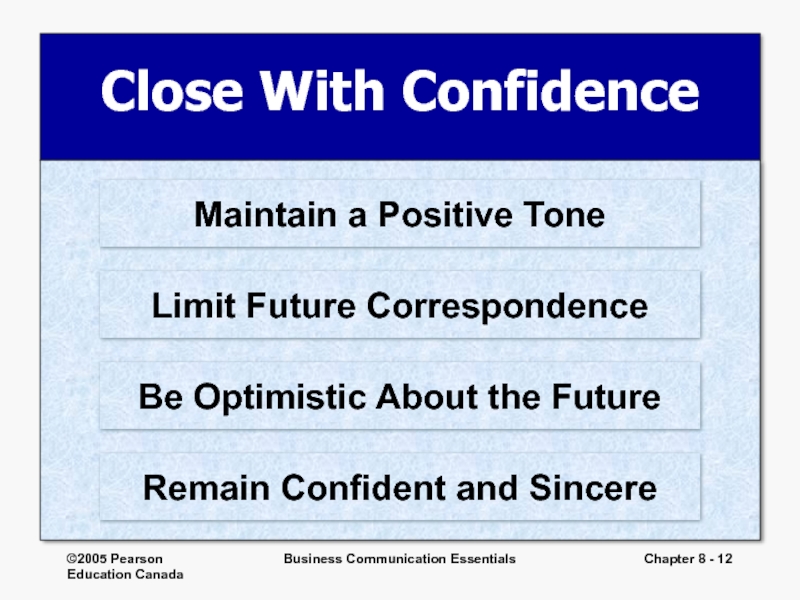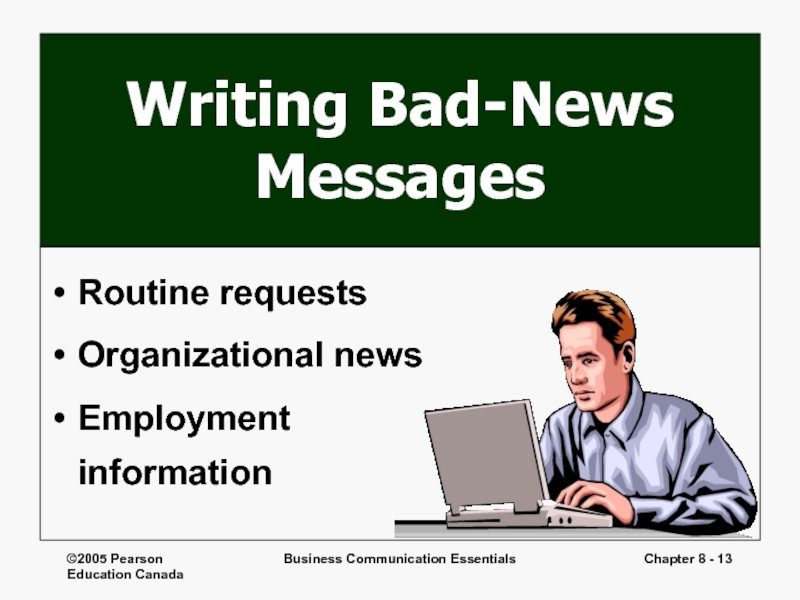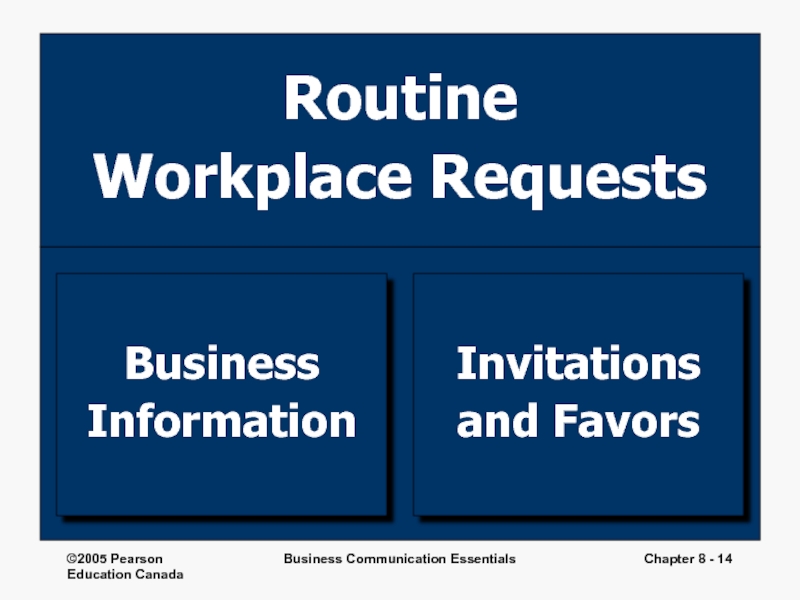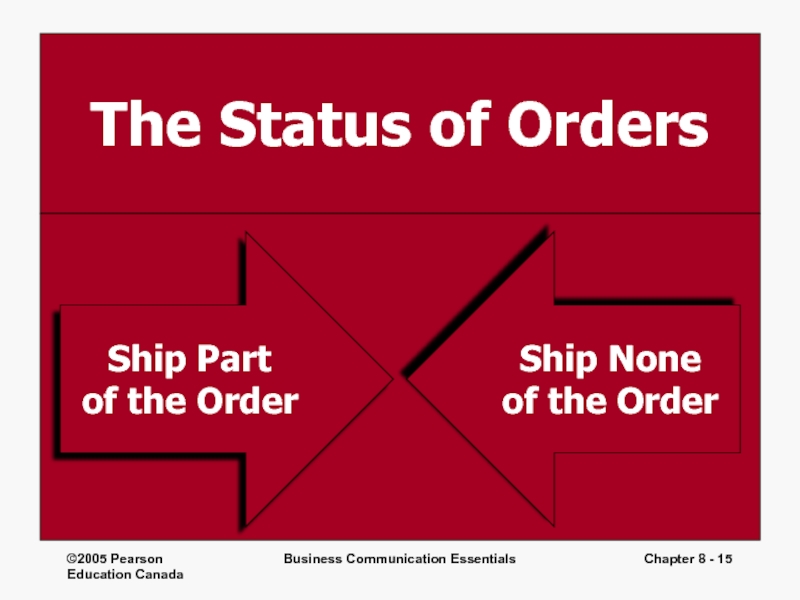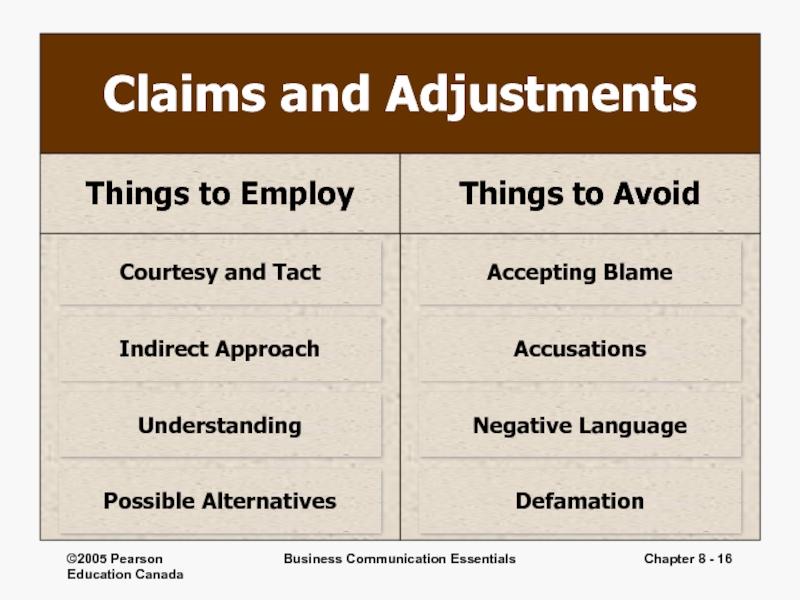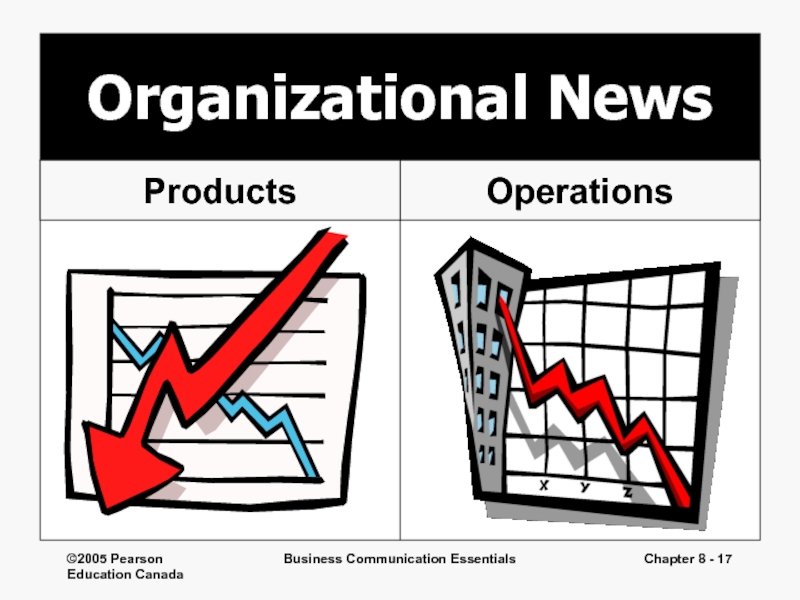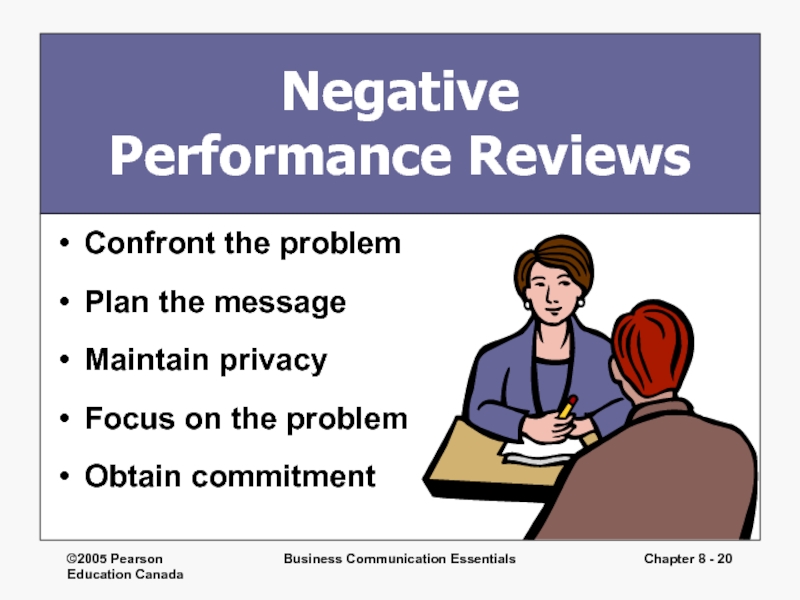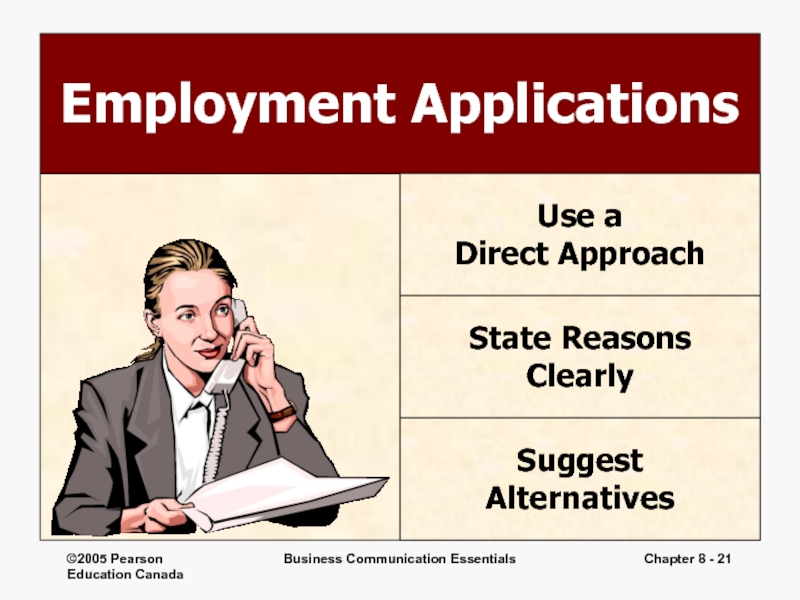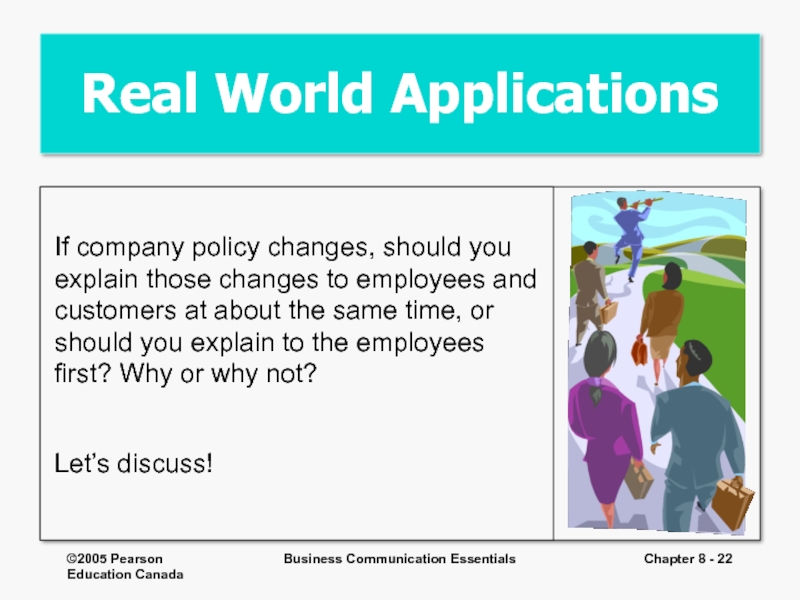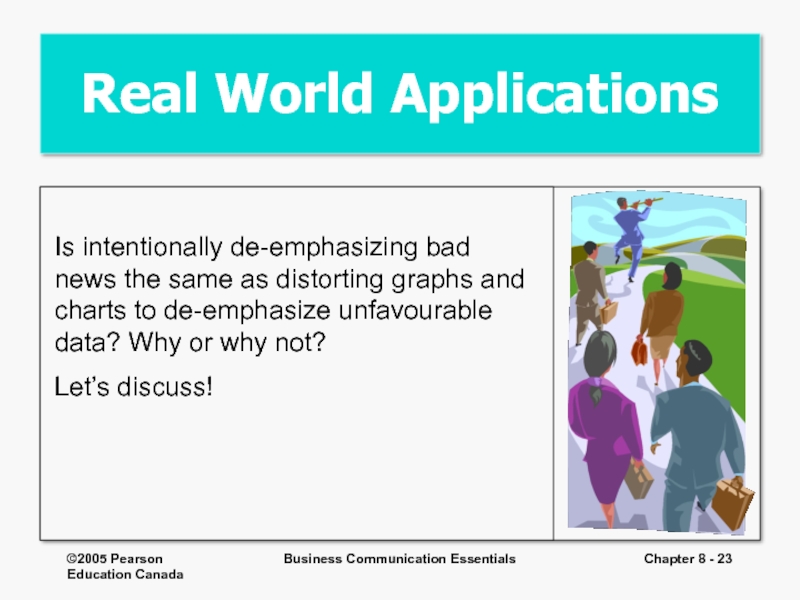- Главная
- Разное
- Дизайн
- Бизнес и предпринимательство
- Аналитика
- Образование
- Развлечения
- Красота и здоровье
- Финансы
- Государство
- Путешествия
- Спорт
- Недвижимость
- Армия
- Графика
- Культурология
- Еда и кулинария
- Лингвистика
- Английский язык
- Астрономия
- Алгебра
- Биология
- География
- Детские презентации
- Информатика
- История
- Литература
- Маркетинг
- Математика
- Медицина
- Менеджмент
- Музыка
- МХК
- Немецкий язык
- ОБЖ
- Обществознание
- Окружающий мир
- Педагогика
- Русский язык
- Технология
- Физика
- Философия
- Химия
- Шаблоны, картинки для презентаций
- Экология
- Экономика
- Юриспруденция
Business. Communication. Essentials. (Chapter 8.1) презентация
Содержание
- 1. Business. Communication. Essentials. (Chapter 8.1)
- 2. ©2005 Pearson Education Canada Business Communication Essentials
- 3. ©2005 Pearson Education Canada Business Communication Essentials
- 4. ©2005 Pearson Education Canada Business Communication Essentials
- 5. ©2005 Pearson Education Canada Business Communication Essentials Chapter 8 - Audience-Centered Tone
- 6. ©2005 Pearson Education Canada Business Communication Essentials
- 7. ©2005 Pearson Education Canada Business Communication Essentials
- 8. ©2005 Pearson Education Canada Business Communication Essentials
- 9. ©2005 Pearson Education Canada Business Communication Essentials
- 10. ©2005 Pearson Education Canada Business Communication Essentials
- 11. ©2005 Pearson Education Canada Business Communication Essentials
- 12. ©2005 Pearson Education Canada Business Communication Essentials
- 13. ©2005 Pearson Education Canada Business Communication Essentials
- 14. ©2005 Pearson Education Canada Business Communication Essentials
- 15. ©2005 Pearson Education Canada Business Communication Essentials
- 16. ©2005 Pearson Education Canada Business Communication Essentials
- 17. ©2005 Pearson Education Canada Business Communication Essentials
- 18. ©2005 Pearson Education Canada Business Communication Essentials
- 19. ©2005 Pearson Education Canada Business Communication Essentials Chapter 8 - Performance Reviews
- 20. ©2005 Pearson Education Canada Business Communication Essentials
- 21. ©2005 Pearson Education Canada Business Communication Essentials
- 22. ©2005 Pearson Education Canada Business Communication Essentials
- 23. ©2005 Pearson Education Canada Business Communication Essentials
Слайд 1©2005 Pearson Education Canada
Business Communication Essentials
Chapter 8 -
Writing Bad-News Messages
Слайд 2©2005 Pearson Education Canada
Business Communication Essentials
Chapter 8 -
From The Real
Often audiences seem to have a premonition that bad news is coming and just as often move to a worst-case scenario. Similarly, bad news is difficult to contain; rumour often precedes fact. Credibility, for you and your organization, can hinge on the speed with which you get the difficult information out to communities, audiences, or individuals.
Kevin Gass, Vice-President, Marketing and Communication
B.C. Lotteries Corporation
Слайд 3©2005 Pearson Education Canada
Business Communication Essentials
Chapter 8 -
Three-Step Writing Process
1
Planning
3
Completing
2
Writing
Analyze the
Situation
Investigate the
Topic
Adapt to the
Audience
Organize the
Message
Compose the
Message
Revise the
Message
Produce the
Message
Proofread the
Message
Слайд 4©2005 Pearson Education Canada
Business Communication Essentials
Chapter 8 -
Strategies for
Bad-News
Convey the message
Gain acceptance
Maintain goodwill
Promote a good corporate image
Minimize future correspondence
Слайд 5©2005 Pearson Education Canada
Business Communication Essentials
Chapter 8 -
Audience-Centered Tone
Слайд 6©2005 Pearson Education Canada
Business Communication Essentials
Chapter 8 -
The Direct Approach
Bad
Step 1
Reasons
Step 2
Positive
Close
Step 3
Flow of the Message
Substance of the Message
Слайд 7©2005 Pearson Education Canada
Business Communication Essentials
Chapter 8 -
The Indirect Approach
Buffer
Step
Reasons
Step 2
Bad
News
Step 3
Positive
Close
Step 4
Flow of the Message
Substance of the Message
Слайд 8©2005 Pearson Education Canada
Business Communication Essentials
Chapter 8 -
Begin With a
Слайд 9©2005 Pearson Education Canada
Business Communication Essentials
Chapter 8 -
Begin With a
Слайд 10©2005 Pearson Education Canada
Business Communication Essentials
Chapter 8 -
Provide Reasons
That Support
Cover positive points
Provide relevant details
Highlight benefits
Minimize company policy
Avoid apologizing
Слайд 11©2005 Pearson Education Canada
Business Communication Essentials
Chapter 8 -
State the Message
De-emphasize
Use a Conditional Statement
Focus on the Positive
Avoid Blunt Language
Слайд 12©2005 Pearson Education Canada
Business Communication Essentials
Chapter 8 -
Close With Confidence
Maintain
Limit Future Correspondence
Remain Confident and Sincere
Be Optimistic About the Future
Слайд 13©2005 Pearson Education Canada
Business Communication Essentials
Chapter 8 -
Writing Bad-News Messages
Routine
Organizational news
Employment information
Слайд 14©2005 Pearson Education Canada
Business Communication Essentials
Chapter 8 -
Routine
Workplace Requests
Business
Information
Invitations
and Favors
Слайд 15©2005 Pearson Education Canada
Business Communication Essentials
Chapter 8 -
The Status of
Ship Part
of the Order
Ship None
of the Order
Слайд 16©2005 Pearson Education Canada
Business Communication Essentials
Chapter 8 -
Claims and Adjustments
Things
Things to Avoid
Accepting Blame
Accusations
Negative Language
Defamation
Courtesy and Tact
Indirect Approach
Understanding
Possible Alternatives
Слайд 17©2005 Pearson Education Canada
Business Communication Essentials
Chapter 8 -
Organizational News
Operations
Products
Слайд 18©2005 Pearson Education Canada
Business Communication Essentials
Chapter 8 -
Letters of
Recommendation
Requested
by Businesses
Requested
by
Practice
Diplomacy
Recognize
Feelings
Be Direct
State Facts
Слайд 19©2005 Pearson Education Canada
Business Communication Essentials
Chapter 8 -
Performance Reviews
Слайд 20©2005 Pearson Education Canada
Business Communication Essentials
Chapter 8 -
Negative
Performance Reviews
Confront the
Plan the message
Maintain privacy
Focus on the problem
Obtain commitment
Слайд 21©2005 Pearson Education Canada
Business Communication Essentials
Chapter 8 -
Employment Applications
Use a
Direct Approach
State Reasons
Clearly
Suggest
Alternatives
Слайд 22©2005 Pearson Education Canada
Business Communication Essentials
Chapter 8 -
Real World Applications
If
Let’s discuss!
Слайд 23©2005 Pearson Education Canada
Business Communication Essentials
Chapter 8 -
Real World Applications
Is
Let’s discuss!
